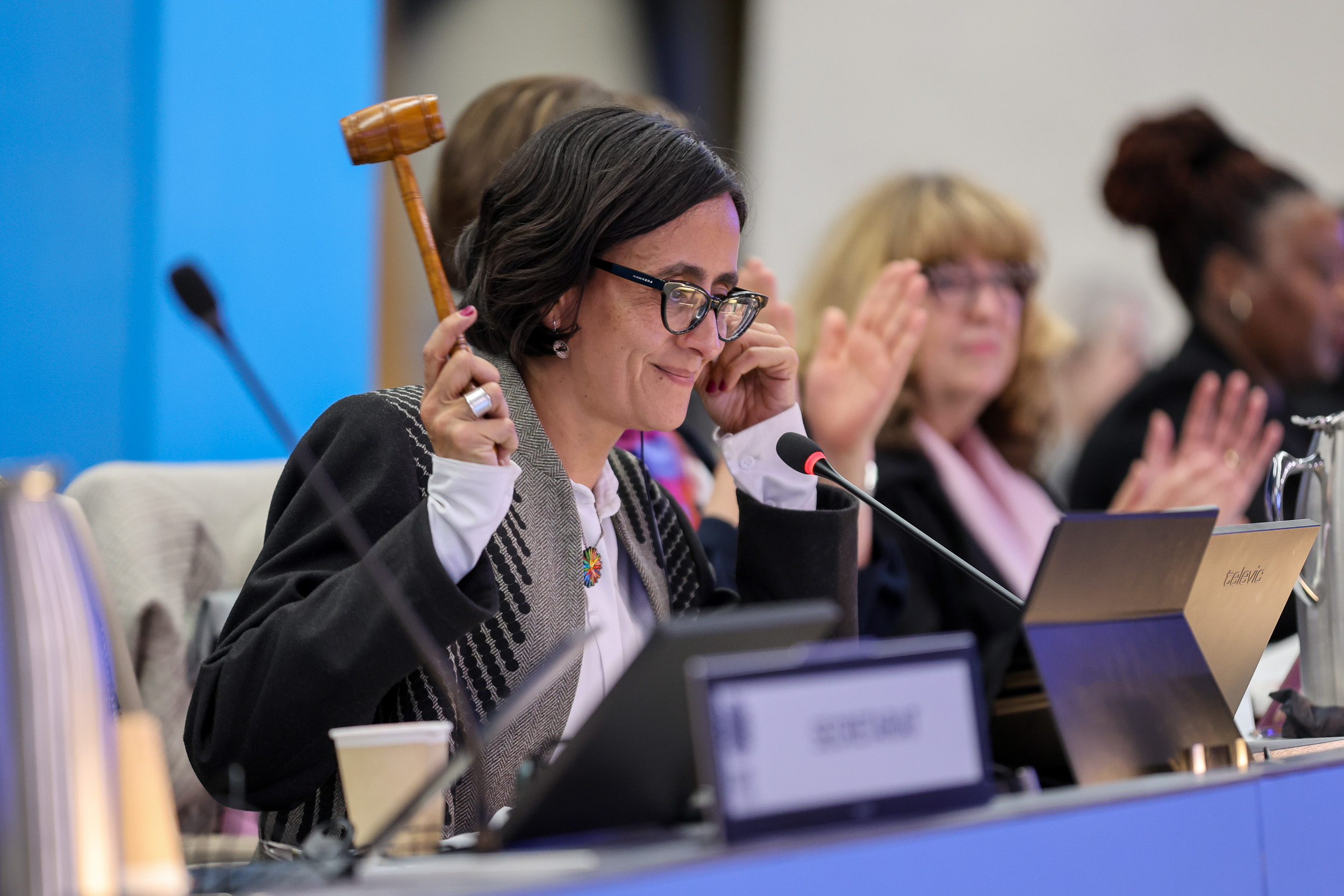COP16 in Rome advances biodiversity finance plan but leaves key funding gaps

COP 16 President Susana Muhamad, Colombia © IISD/ENB | Mike Muzurakis
04.03.2025
The 16th Conference of the Parties (COP16) to the Convention on Biological Diversity (CBD) concluded in Rome last week, with a hard-won agreement on nature finance after marathon negotiations. These talks were a continuation of COP16, which initially convened in Colombia in November 2024 but failed to reach legally binding commitments. In February 2025, delegates from nearly 200 nations finally reached a compromise aimed at addressing the global biodiversity crisis, though key challenges remain unresolved.
One of the major outcomes of COP16 was the adoption of a roadmap to mobilise $200 billion annually for biodiversity conservation by 2030. This includes a commitment to raise at least $20 billion annually for developing nations by 2025, increasing to $30 billion by 2030.
The agreement was hailed as a victory for multilateralism in an era of geopolitical uncertainty. Martin Harper, CEO of Birdlife International, an ERF grantee partner, expressed that: “We now have a roadmap to secure the finances required to avert the biodiversity crisis, and the means to monitor and review progress. These crucial steps must now be backed up with real money from developed nations who promised just 26 months ago to provide $20 billion additional resources by the end of 2025. We are a long way short of this target and so we urge governments to redouble their efforts to find the funding to invest in nature – crucial to our own future prosperity.”
However, despite this progress, concerns remain over how the funding will be delivered, with the decision on creating a new global biodiversity fund postponed until 2028. Instead, biodiversity financing will continue to be channelled through existing mechanisms such as the Global Environment Facility (GEF), with the newly established Cali Fund offering an additional avenue for corporate contributions to conservation efforts. Developing nations have criticised the GEF fund for being difficult to access and disproportionately controlled by wealthier countries.
With global wildlife populations having declined by more than 70% since 1970 and threats from deforestation, pollution, and unsustainable agriculture escalating, the global goal to halt nature loss by 2030 is becoming increasingly out of reach.
COP17 in 2026 will serve as a crucial checkpoint to assess progress on financial commitments and conservation efforts. The agreements reached in Rome mark an important step forward, but the real challenge lies in translating promises into action before biodiversity loss becomes irreversible.